The following Letter to the Editor was submitted by ex-PP Minister and NJAC member Embau Moheni on the rise of the 1970 Revolution, People’s Politics and the State’s fightback, which included the controversial Public Order Act and the ban of the ‘Black Power Salute’:
In its booklet entitled ‘Slavery to Slavery’, the National Joint Action Committee (NJAC) showed that Caribbean economies had continually evolved from one form of slavery to another.
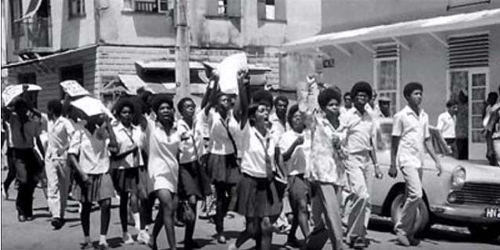
(Courtesy Embau Moheni/NJAC)
For instance after the Haitian Revolution and Dessalines declared Haiti independent in 1801, slavery could no longer be maintained in its original form, and some concessions had to be made, which were the abolition of the slave trade in 1807 and the Emancipation Proclamation eventually coming in 1833.
Likewise in the 1920’s and 1930’s when Tubal Uriah Buzz Butler, Captain Andrew Cipriani and Adrian Cola Rienzi demanded worker’s rights and “home rule”, another concession, that of adult suffrage, was granted.
The system of control and domination, however, was becoming more sophisticated with time, thus guaranteeing that at each stage, wealth and power remained entrenched in the hands of the European countries.
In 1970, eight years after independence, our economy was still dominated by foreign concerns and a privileged local white elite. The pattern of ownership in 1970 is reflected in the following statistics:
- 90% of the oil industry wholly owned by foreigners,
- 60% of the money made in transport, storage and communications went to foreigners,
- 43% of the money made in construction was earned by foreign firms,
- In the Wholesale and Retail distribution sector, foreign ownership was dominant in the larger establishments, e.g. the Cannings group, Bookers (Ross, Stephens, Woolworths, etc.),
- Almost half (½) of the land in estates over two hundred (200) acres was owned by foreigners.
- In Tobago, which was an agricultural economy, 71% of the best land was owned by either foreigners or a small local elite.

(Courtesy NJAC)
The rest of the economy was owned by a small local white elite.
The lives of the masses were suffocating under the economic system which NJAC met in place in 1970.
NJAC was formed in 1969, under the leadership of Chief Servant Makandal Daaga—then Geddes Granger. And, after months of political education and mobilisation of the masses in various communities throughout Trinidad and Tobago, the people were ready to respond to its call to make demands for a New and Just Society, centred around people’s participation and people’s power. And respond they did with 56 days of street demonstrations across the length and breadth of Trinidad and Tobago.
The people took to the streets in their tens of thousands as they sought to re-define their nation, their region, and their world in the context of their experiences, with the purpose of the creation of a New and Just Society.
NJAC sought to re-define politics—a philosophy of governance and of the exercise of power—from that of an elitist profession, to one of a life source, with the people firmly rooted as the very heartbeat of the entire process and the “supreme authority in the decision making process.”

NJAC’s response was the mobilisation of the population to demand people’s control of the “Commanding Heights of the Economy”, with the slogan, ‘We do not want crumbs, We want the whole bread.’
The movement’s main instrument, the street demonstration, served two main functions. Firstly, it was used to convey the people’s demands and their determination to achieve them.
The people’s resolve is exemplified by the woman who marched 26 miles from Woodford Square to Couva while she was seven months pregnant. She refused to accept all offers by passing cars to take a drop. She said that if the baby was born on the street it would have been for a worthy cause.
Secondly, the demonstration gave NJAC the ideal opportunity it needed to launch a nationwide education initiative. The demonstration itself was transformed into a massive school. Along the length of a single demonstration, there could be as many as six PA Systems at strategic intervals, with six speakers discussing a variety of topics at the same time.
Speakers dealt with such topics as Politics, the Economy, History, Philosophy, Race Relations, the Family, the Woman and the Youth, Caribbean Relations or any topic which could enlighten the people.
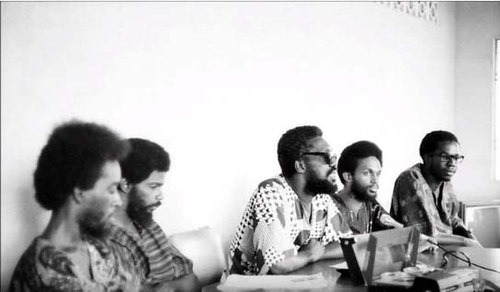
(Courtesy Embau Moheni/NJAC)
As part of its educational process, NJAC imported thousands of books on as wide a range of topics as were discussed on the demonstrations.
Among the favourite books were ‘The Wretched of the Earth’, ‘A Dying Colonialism’, and ‘Black Skin White Masks’ (to name a few) by the Martinican psychiatrist Frantz Fanon; ‘The Grounding With My Brothers’ by Walter Rodney, ‘The Autobiography of Malcolm X’, books about Marcus Garvey, ‘Black Man of the Nile’ by Yosef Ben Jochanan, ‘Capitalism and Slavery’ by Dr Eric Williams, books by or about Mahatma Gandhi, books by the British historian Basil Davidson and Mao’s Tse Tung’s books.
The blocks at the road corners were transformed from negative to positive environments of learning. The Brothers on the blocks who exercised an avid appetite for knowledge were literally studying the works of these great authors under the street lights.
The NJAC leadership had a fierce determination to impart Ideas, Information, Principles and lessons to the masses, with an equally fierce desire on their part to absorb as much of this knowledge as possible.
A combination of the above factors gave rise to the Trinidad & Tobago Revolution of 1970, and the “New Consciousness” which swept the country.
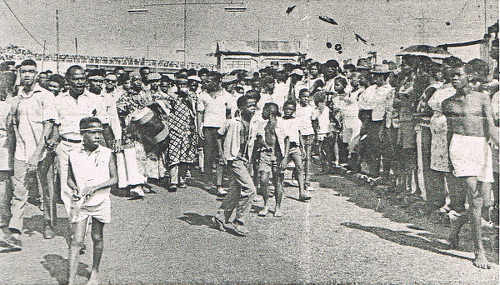
(Courtesy Embau Moheni/NJAC)
It also spurred the rise of a host of young leaders who committed themselves to sacrifice for, and serve, their country in pursuit of a New and just Society. Their creed was “let us make the necessary sacrifices now and not leave the burden to the next generation.”
Two principles which NJAC spoke on were those of Justice and Equality; and by extension the fair treatment of all. NJAC felt strongly that one’s race, class, sex, or belonging to a minority or vulnerable group, should in no way influence accessibility to opportunities, equal treatment under the law and equal access to all institutional state services.
In promoting the principle, “be a brother, be a sister” for example, NJAC likened the nation to a family. This principle gained widespread acceptance almost automatically.
Right across the nation people were addressing each other as “brother” and “sister”. This, along with the new consciousness sweeping the country resulted in a 56% reduction in crime in 1970.
This did not last, however, for when the state of emergency was declared, the powers that be conducted the most sinister, vicious and thorough assault on the advent of the new brotherhood and sisterhood.
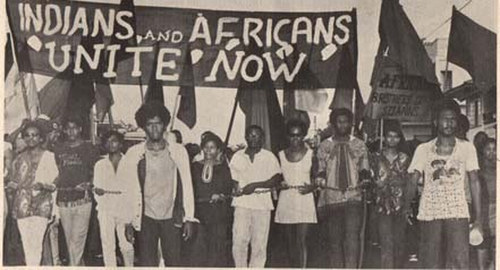
(Courtesy Embau Moheni/NJAC)
Within three years, persons who were part of a genuine expression of love and togetherness in 1970, began to say “Don’t call me brother”, or “Don’t call me sister”, “it is your own brother who betrays you.” Another quest to build bonds of love and fellowship was destroyed.
Herein lies the genesis of today’s crime menace which is spiralling out of control. When our people were saying “I cannot hurt my brother or my sister”, their minds were poisoned with mistrust and hate for each other, sowing the seeds of today’s tragic loss of respect for human life.
NJAC is also convinced that national unity is a prerequisite for the building of a nation—i.e. one nation, not two or three—and hence our emphasis on the march to Caroni. Yet when the East Indians decided to extend their hand of brotherhood in a planned return march on 21 April 1970, a state of emergency was declared to stop them.
The impression is sometimes given that the emergency was imposed to stop the violence that was developing in the demonstrations. What must be made very clear is that the demonstrations were extremely disciplined.
For example, during the march for Basil Davis’s funeral, with the lifting of one hand by Makandal Daaga 100,000 persons stood still; or with all the threats and predictions of violence preceding the march to Caroni, it was highly disciplined from beginning to end. In both cases the newspapers reported that the demonstrations were incident free.

(Courtesy Embau Moheni/NJAC)
In this regard, the article by George Alleyne in the Newsday of Monday 4 January 1999 is very instructive. The government was very determined to stop the Indians marching into Port of Spain at all costs.
This is an extract from George Alleyne’s article:
“Black Power leaders had staged a march of several thousands down Charlotte Street. But unknown to them there were agents provocateurs from the special branch, who marched alongside them shouting Black Power slogans.
“As the demonstrations neared the Charlotte Street/Independence Square (North) intersection the agents provocateurs reportedly, ran into a couple of the Charlotte Street stores and began tossing goods from the shelves. They were quickly followed by demonstrators, who did immense damage as had been the plan.
“The agents provocateurs immediately ran out of the stores and moments later police officers began firing tear gas at the demonstrators. This happened on Thursday 16 April 1970. A few days later the State of Emergency was declared.”
The Special Branch incited the violence, framed the movement, and gave the government the excuse they wanted to declare the State of Emergency.
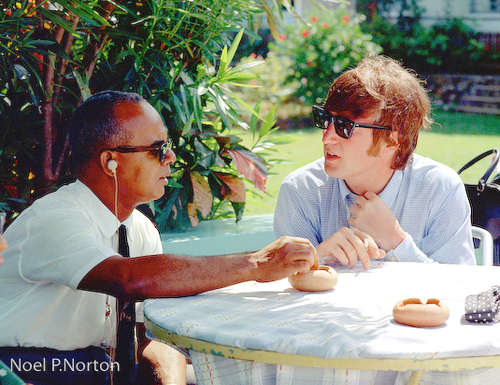
(Copyright Noel P Norton)
With the declaration of the emergency on Tuesday 21 April 1970, 46 years ago, Daaga, along with other members of the NJAC leadership were detained on Nelson Island and at the Royal Jail.
In the ensuing months, a reign of terror was released on the population. A dusk to dawn curfew was imposed, from which several persons suffered detention, often with physical brutality. There were several reports of women being raped.
On the morning of April 21, a number of soldiers of the Defence Force, under the leadership of Lieutenants Raffique Shah and Rex Lassalle mutinied and took control of Teteron Barracks.
One soldier lost his life when the soldiers came under shelling from the Coast Guard in their attempt to leave Teteron.
A number of soldiers were later tried and found guilty of mutiny, with Shah being sentenced to 20 years in prison while Lassalle and Michael Bazie got 15 and seven years respectively. Other soldiers got lesser sentences.
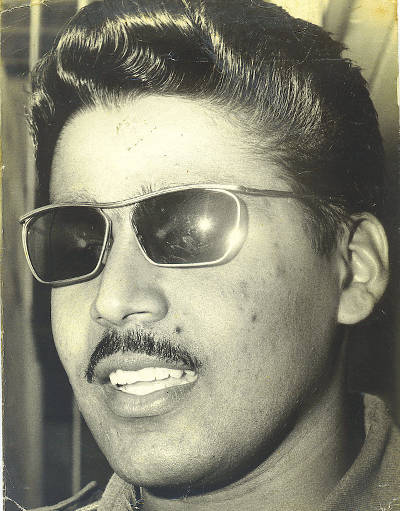
Shah, a former lieutenant, led 300 troops in a mutiny at Teteron Barracks during the Trinidad and Tobago Revolution of 1970.
The position taken by the soldiers, however, won widespread support and they were renamed the “People’s Army.” The students took the lead, in holding demonstrations calling for the release of the soldiers, with Woodbrook Secondary playing a prominent part in the march on Pot of Spain.
In Tobago, the students of the Roxborough Composite School led a 20 mile demonstration in support of the soldiers. They were joined by other students—primarily from Bishops High School—on the way, and together they marched on Scarborough.
Shah and Lassalle appealed their sentences. Their appeal was upheld by the appeal court on the grounds of condonation by their Commanding Officer, Brigadier Joffre Serrette. But the State appealed this decision.
They were finally freed on the 27 July 1972 after the Privy Council upheld their appeal. A massive crowd gathered outside the Royal Jail to welcome them to freedom after more than two year’s incarceration. The other soldiers were freed the following day.
During the state of emergency the government, through its Attorney General Karl Hudson Phillips, brought to Parliament the most draconian piece of legislation ever tabled in this country; the now infamous “Public Order Act.”
This Act would have deemed it illegal for persons to gather in more than three in public or to gesture with an upraised hand—to outlaw the Black Power Salute.

(Courtesy Embau Moheni/NJAC)
The intention was to lay a solid foundation for a totally repressive state. Every single institution of any significance condemned the Bill and the government was forced to withdraw it.
The government did, however, bring back some parts of the Bill with subsequent legislation.
The fact remains that the government sought to use the period of the emergency, 21 April to 17 November to impose repressive legislation on the population. But the people fought back.
As we reflect on this momentous and most defining period in our nation’s history, let us see what lessons can be learnt from the Trinidad and Tobago Revolution of 1970.
Let us also resolve within ourselves to use these lessons and good sense and faith to collectively work together to lay a platform for a better Trinidad and Tobago.
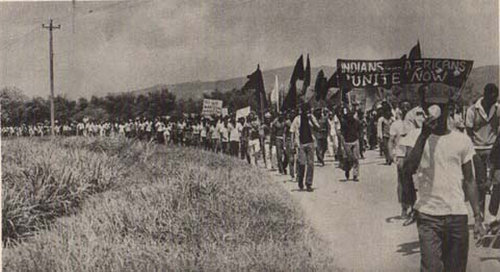
(Courtesy Embau Moheni/NJAC)
Embau Moheni is the Deputy Political Leader of the National Joint Action Committee (NJAC) and Chairman of the National Action Cultural Committee (NACC). He is a former Minister in the Ministry of National Security under the People’s Partnership Government. He was twice arrested as a teenager during the uprising of the early 1970s.
 Wired868 Wired868 for smart sport news and opinion
Wired868 Wired868 for smart sport news and opinion
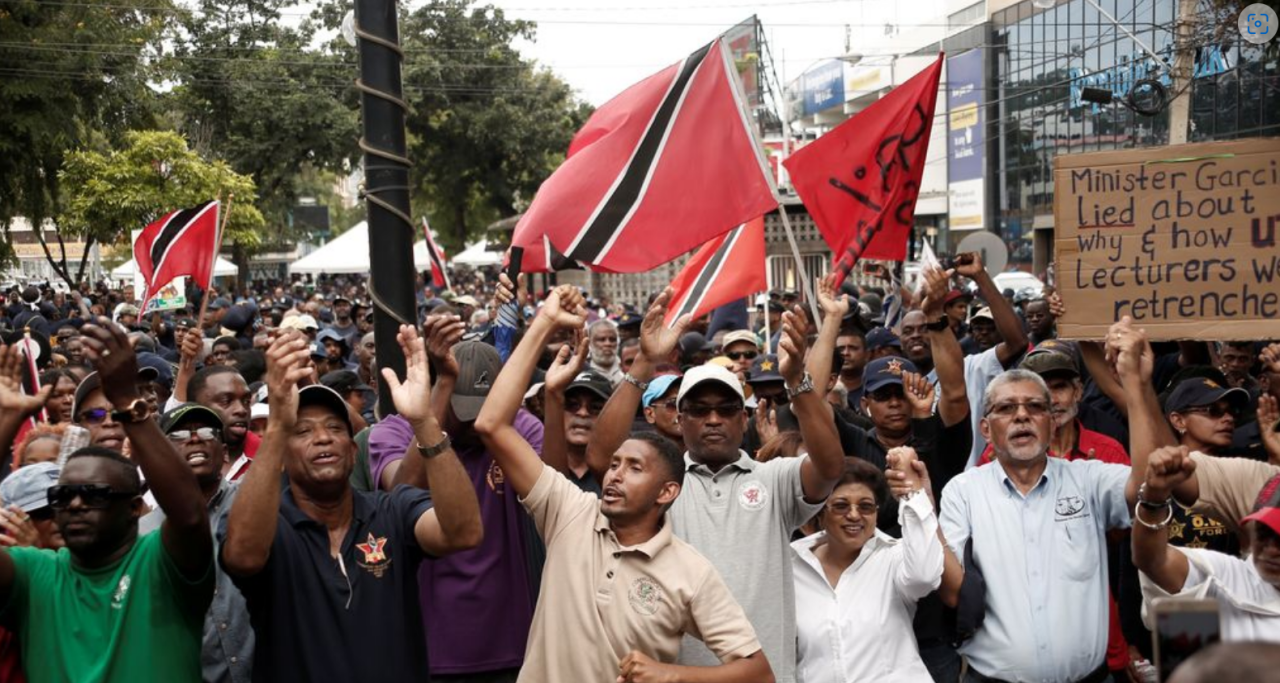
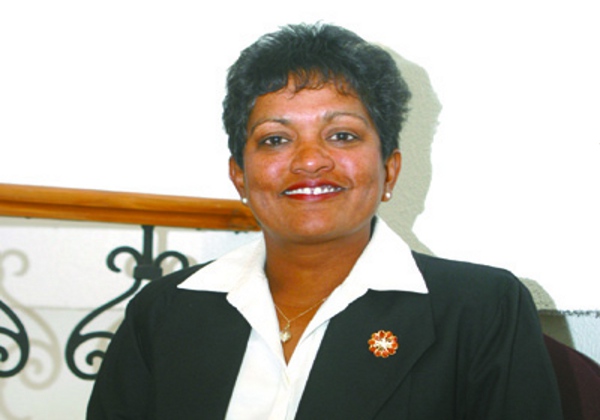
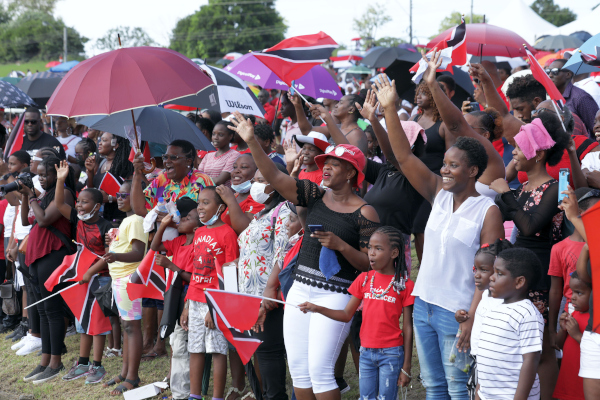
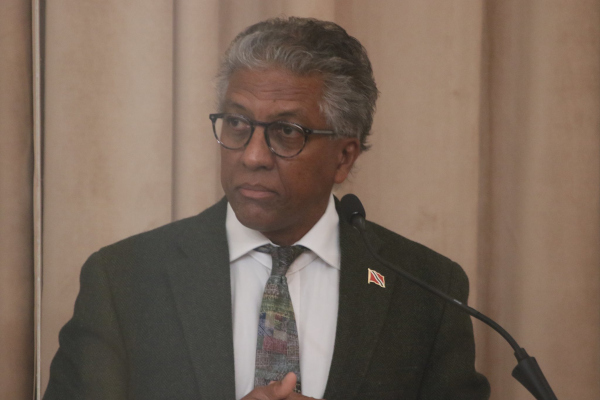
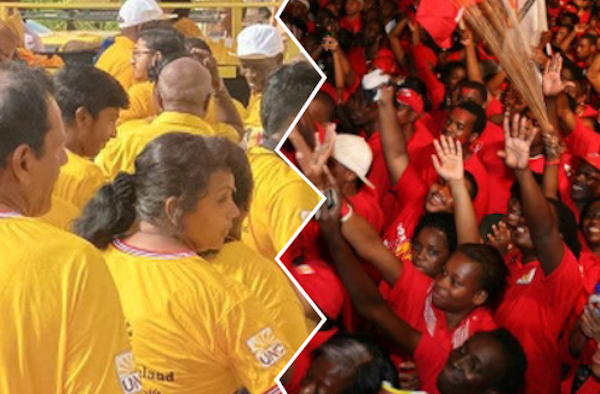

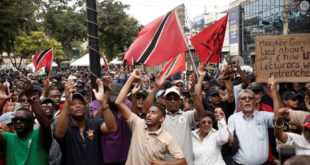
The position taken by the soldiers, however, won widespread support and they were renamed the “People’s Army.” The students took the lead, in holding demonstrations calling for the release of the soldiers, with Woodbrook Secondary playing a prominent part in the march on Pot of Spain.
In Tobago, the students of the Roxborough Composite School led a 20 mile demonstration in support of the soldiers. They were joined by other students—primarily from Bishops High School—on the way, and together they marched on Scarborough.
Can’t remeber clearly if SHELL ..BP APEX was in in dance to to bust it…but johnny O..made plenty $$$$ with TESORO oilfield.taxpayers $$$ under the PNM with Eric Williams.jhonny the first pnm con man
It did some good for black people to gett jobs in high offices.they soon after OWTU/George Weeks cripple the country by schanting posting banners in the oil belt.TEXACO & AMOCO MUST GO
Let’s not forget the attacks on women with non- afro hairstyle by these Black Power advocates, the desecration of the Cathedral, the painting of Lord Harris statue black , the looting and burning of buildings. The State had to act.
Cool.yes i was ahh bad boy in my younger days
I was 2 when all this occurred. Please share more information as you have about it please.
Lastly, we might ask Brother Embau to one of these days give an account of NJAC’s, the Chief Servant’s and his stewardship in government during the 2010 to 2015 PP administration. All in the interest, of course, of bringing the truth right up to date…
“The intention was to lay a solid foundation for a totally repressive state. Every single institution of any significance condemned the Bill and the government was forced to withdraw it.
The government did, however, bring back some parts of the Bill with subsequent legislation.
The fact remains that the government sought to use the period of the emergency, 21 April to 17 November to impose repressive legislation on the population. But the people fought back.”
Younger people might want, if they are so minded, to listen to The Mighty Duke’s “Black is Beautiful” and Chalkdust’s offerings during the 1970’s (“Ah fraid Karl,” “Ah put on mih guns again”” etc.) along with Stalin’s and Valentino’s calypsos from the same era; they give you a general sense of how the ordinary man-in-the-street saw the events that were unfolding on the public stage.
Sorry, people, sorry to puncture your balloon but you need to take a lot of this with an ample helping of salt.
There is some truth in this account, of course, but I submit that it’s a romanticised version of what really occurred, designed to burnish the NJAC brand.
But I’m certain Mr Shah will have something more to say on the issue of what really happened in 1970 and immediately thereafter and then we shall have a more balanced perspective. In the meantime, it might be useful to get your hands on Shah’s “History will Absolve me” speech delivered at the mutiny trials as a counter to this attempt at revisionism.
Remeber myself in that march ULF
Lasana Liburd, you love to troll my ass, eh?
#CheekyBastard
Lol. Do I? I always think I got stuff that would interest ya. 🙂
I am extracting the historical perspective more than anything else…no love lost for NJAC and the Chief Servant…they played their part in another time…and as a Afro Trinibagonian I’m great full…but Rhoda I share your assessment of more recent NJAC incarnations…and we need to take note of Eko Watts saying too
Lets take a closer look at the origins of the police service.
And what Randolph Burroughs really stood for.
Sometimes a nationalist perspective precludes a world view, there were similar occuring movements in other parts of the world and keeping them separate has been the success of the neocolonialists.
It might have benefited the neocolonialists. But it is probably due to many other factors that it didn’t happen and not intentional.
Perfect shouldn’t be the enemy of the good.
They did start by referencing Haiti though.
The strategy they used in the case of NJAC was to isolate the organisation. The Chief Servant was banned from all the CARICOM countries except Guyana (only because Forbes Burnham used to posture with image of a revolutionary and banning the Chief Servant would have hurt his image). He was also banned from the US. This did not, however, stop the Chief Servant from setting the Caribbean Liberation Steering Committee. Barbados was the first to ban him but also the first to lift the ban. (Some islands maintained until quite recently.) Meeting could only be held in Guyana, Barbados or Trinidad & Tobago. The members included Tim Hector (Antigua), Bobby Clarke (Barbados), Eusi Kwayana (Guyana), Raymond Charlotte (French Guiana, also called Cayenne), Trevor Monroe (Jamaica), Maurice Bishop (who became PM of Grenada), Rosie Douglas (who became PM of Dominica). Though Dr. Ralph Gonsalves was not on the committee several activities were co-ordinated with him. Our strongest connection to St, Vincent was through YOULIMO (a youth organisation that we worked with and assisted). What happened in the Caribbean is just the tip of the iceberg in terms of the international forces which operated to prevent a united effort from developing. Maybe I will write about that in the next 46 years.
It is good info.
I’m enjoying the historical info though.
I didn’t know of your feelings actually. But I share your disappointment regarding the NJAC’s stint in government. Not doubt about it.
You always have stuff that interests me. Always. And you know my thoughts on Moheni. But the info is accurate. Eric dropped the ball with the BPM. Badly.
If you look good you will see me right up in there …. “It was an era of anxiety excitement and expectation ….. Young people like me were excited by the promise of self governance ….I was interested in their teachings because they spoke about taking charge and control of one’s destiny, being treated fairly and respectfully and about empowering people ….. The euphoria of self governance” An excerpt from my book …
Tell us more of that period Cheryl!
Meetings and marches took place daily and attracted scores of angry expectant young people caught up in the ecstasy of defiance. The police were witless in their attempts at suppression because as they disrupted one march or meeting another convened at a different location.
One day at school while in class some of my classmates and I wrote ‘Power to the People, Black Power’ on the blackboard and on copy book pages and drew clenched fists; the movement’s symbol. The principal passed by the classroom on one of his walkabouts and read what was written on the blackboard. He walked menacingly into the classroom, with his hands held behind his back and his eyebrows furrowed a signal of his anger. Georgie, always brave and unafraid, had drawn the clenched fists on the pages of her copybook. The principal, when he noticed what she had done said to her “come with me.” He took her out of the classroom to the taps which were situated just outside the room. He made her wet the paper and said to her “Eat it!” We all watched as she defiantly soaked the paper, put it into her mouth and chewed. ‘Georgie’ was taller than I then but at that moment she seemed even taller. She was very dark skinned, sharp cheek bones, slanted eyes, a straight nose, lips, though thin, stretched beautifully across her face and even pearly white teeth, which when she smiled, made it difficult for you not to want to smile too. She did not ask not to eat the paper. She chewed defiantly and proudly and at that moment I understood what it meant to be ‘black and proud.’
The principal was a symbol of the oppression that we all felt at that time. We were not being loud or disruptive but everyone wanted to shut us up. Like most oppressors, like the then government of Trinidad and Tobago, he bluffed in the face of true opposition. So before ‘Georgie’ could swallow it he told her to spit it out. That action angered me and strengthened my resolve to challenge authority.
How can I get a copy of this book?
Wow. I’ve got to get a copy of that book Cheryl! Indeed, Wired868 will happily publish excerpts for you to help promote it.
yes it was the beginning of black consciousness ,the time was a period of upheaval with the people seeking their fair share,the marginalized,the economies were controlled by foreign capitalists,but looking back now the gains have been reversed,we have black on black crime,the drug trade and its attendant tentacles,the violence in these era,one wonders where are the revolutionaries today ,with globalization ,where will they fit in.the state responded in the only way it could have,what ever that was achieved has simply evaporated away.